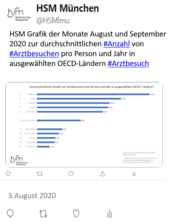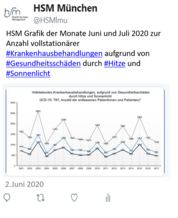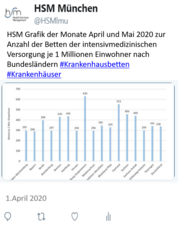The impact of physician supply on avoidable cancer mortality in Germany.
| Autoren/Herausgeber: |
Sundmacher, L. Busse, R. |
|---|---|
| Erschienen: | 2011 |
| Publikationsart: | Articles in Refereed Journals (International) |
| ISBN/ISSN: | 0168-8510 |
| erschienen in: | Health Policy |
| Weitere Quellenangabe: | Volume 103, Pages 53-62 |
Abstract
Background
Measures of avoidable deaths incorporate the notion that deaths from certain causes should not occur within specified age groups given effective prevention or timely and appropriate access to health care. The present study investigated the impact on specific types of avoidable cancer deaths (ACD) of regional variations in the supply of health services over five years using German districts (Kreise und kreisfreie Städte) as units of analysis.
Methods
Age-standardized, average ACD rates were calculated for 2000–2004 for each of the 439 districts in Germany using unit-record mortality data. The distribution of ACD was subsequently analyzed using country maps and negative binomial regression with random intercepts. Potential endogeneity of physician supply to ACD was controlled for using an instrumental variable approach.
The panel data for the years 2000–2004 were merged from a range of official statistics including mortality and hospital records (DESTATIS) and statistics provided by the Federal Office for Building and Regional Planning (INKAR).
Results
In women, 27.81 per 100,000 died from preventable or treatable cancer types in an average year between 2000 and 2004. The rates for men were generally higher, with 40.07 standardized ACD per 100,000.
The regression results showed that an increase in physician supply per 100,000 was significantly associated with lower ACD rates in cancer of the female breast, and cancer of the colon, rectosigmoid junction, rectum and anus in both sexes. The contribution ranged from a decrease by a factor of 0.9994 (female breast cancer) to a factor of 0.9986 (cancer of the colon, rectosigmoid junction, rectum and anus in men) in ACD rate as the physician–population ratio increased by one unit.
Conclusion
An increase in physician density tended to be associated with a small reduction in some ACD rates. We suggest that better accessibility or quality of care might have linked increased physician density with improved health outcomes.





